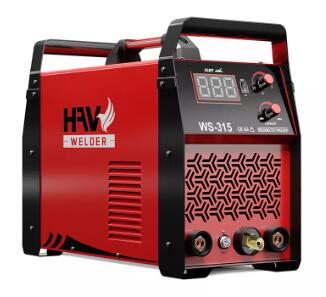Exploring the Significance of the Gas Delay Feature in a TIG Welding Machine
2024-05-30
TIG (Tungsten Inert Gas) welding, as one of the most precise and versatile welding techniques, is widely used in various industries. One of the key features that sets TIG welding apart is the 'Gas Delay' function, which plays a crucial role in ensuring weld quality and minimizing weld defects. In this blog, we'll delve into the significance of the 'Gas Delay' feature in a TIG welding machine.
What is Gas Delay?
The 'Gas Delay' feature in a TIG welding machine allows for a delayed shut-off of the inert gas flow after the welding arc is extinguished. This delay ensures that the weld pool remains protected from oxidation and contamination until it cools down sufficiently.
Why is Gas Delay Significant?
The significance of the Gas Delay feature lies in its ability to safeguard the weld pool and minimize weld defects. Here's why:
Prevention of Oxidation: As soon as the welding arc is extinguished, the weld pool is vulnerable to oxidation. The Gas Delay feature ensures that the inert gas continues to flow for a specified period, providing a protective shield over the weld pool and preventing oxidation.
Reduction of Weld Defects: Oxidation and contamination can lead to various weld defects, such as porosity and inclusions. By delaying the shut-off of the inert gas, the Gas Delay feature minimizes the chances of these defects occurring, resulting in improved weld quality.
Improved Weld Appearance: By preventing oxidation and contamination, the Gas Delay feature also contributes to a more aesthetically pleasing weld appearance. The finished weld will have a smoother, cleaner, and more consistent look.
How to Use the Gas Delay Feature Effectively?
To maximize the benefits of the Gas Delay feature, it's important to use it effectively. Here are a few tips:
Adjust the Delay Time Appropriately: The optimal delay time depends on factors like material thickness, welding speed, and the type of inert gas used. It's essential to adjust the delay time according to your specific welding requirements to ensure adequate protection of the weld pool.
Monitor the Gas Flow: Ensure that the inert gas flow is sufficient and consistent during welding. Any fluctuations in the gas flow can affect the effectiveness of the Gas Delay feature.
Follow Safety Procedures: Always follow the safety procedures and instructions provided by the welding machine manufacturer. This includes wearing protective gear, ensuring proper ventilation, and avoiding welding in enclosed spaces.
In conclusion, the 'Gas Delay' feature in a TIG welding machine is a crucial aspect that contributes significantly to weld quality and minimization of weld defects. By understanding its significance and using it effectively, you can ensure superior welding results and improved productivity in your welding operations.



